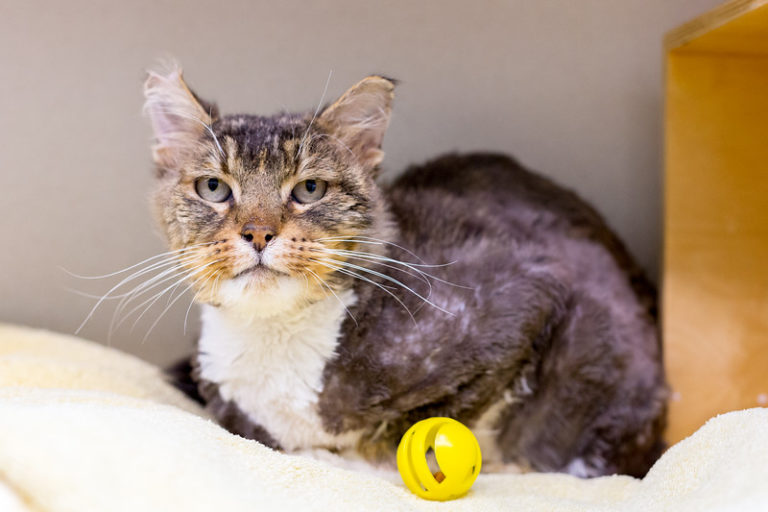As your cat ages, the likelihood she will develop various changes in the function of her body systems increases. Some of these will be normal changes due to the aging process, others may be indicative of disease.
To be more easily alerted to possible signs of disease early in the disease process, it is advisable to take the following measures:
- Groom, check and clip nails, look for any lumps, bumps, or non-healing sores; are there any abnormal odors, any change in size of abdomen, or increased hair loss?
- Monitor behavior: is there a change in sleep patterns, a tendency to be around people, easily startled, sleeping in an abnormal or unusual position?
- Monitor activity and mobility: is there a difficulty with stairs, bumping into things, sudden collapses, seizures, any loss of balance, any lameness or change in gait?
- Look for any changes in respiration: is there noticeable coughing, panting, or sneezing? Provide home dental care: brush your cat’s teeth, regularly examine the inside of her mouth; is there excessive drooling, bad breath, are the gums yellow, light pink, or purplish?
- Monitor food consumption: how much is being eaten, what type of food is being eaten (e.g.; does your cat leave the hard kibble and only eat the canned?), any difficulty eating or swallowing, any vomiting?
- Monitor water consumption: drinking more than usual or less than usual?
- Monitor urination and defecation: note color, amount, consistency, and frequency of stool; note color and amount of urine; any signs of pain while urinating or defecating, any inappropriate elimination (urinating or defecating outside of the litter box)?
- Measure weight every two months using a mail or baby scale, or the scale at your veterinarian’s office.
- Monitor environmental temperature and the temperature at which your cat seems most comfortable.
- Schedule regular health check-ups with your cat’s veterinarian.

